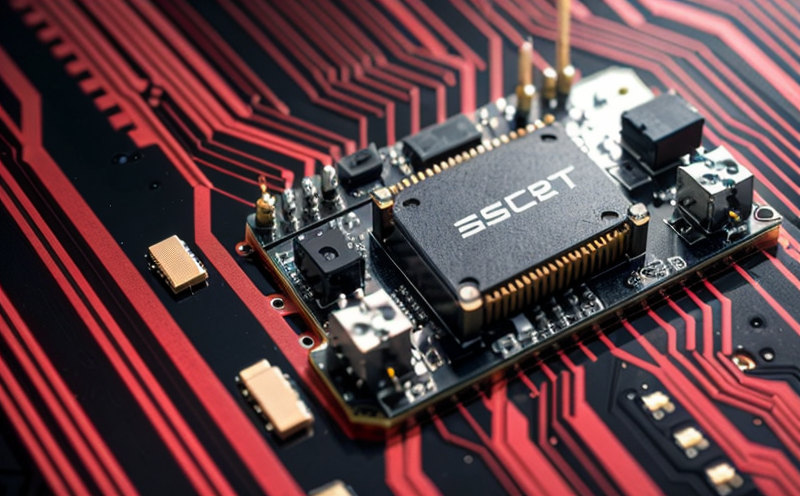Hardware & Embedded Systems Security Testing
Hardware and embedded systems security testing is an essential component of ensuring the robustness and integrity of technology products in today's increasingly interconnected world. As cyber threats evolve, it becomes imperative for manufacturers to implement stringent security measures to protect sensitive data and intellectual property.
The primary goal of hardware and embedded systems security testing is to identify vulnerabilities that could be exploited by malicious actors. This includes assessing the security features of microcontrollers, processors, memory chips, and other critical components within electronic devices. The process involves simulating various attack vectors such as buffer overflows, side-channel attacks, and firmware manipulation.
A secure embedded system must resist unauthorized access, protect sensitive data from theft or corruption, and ensure that the device behaves predictably under all conditions. This requires a comprehensive approach that covers both hardware and software aspects of the design. The testing process often starts with an initial risk assessment to prioritize areas where potential weaknesses might exist.
During the testing phase, various methodologies are employed depending on the specific requirements of the system being evaluated. Common techniques include static code analysis, dynamic analysis using controlled environments like virtual machines or hardware emulators, and penetration testing by simulating real-world attack scenarios. Each method has its strengths and limitations; therefore, a combination of approaches is often necessary to achieve comprehensive coverage.
Once identified, any discovered vulnerabilities should be documented thoroughly along with recommended remediation steps. This information serves as valuable feedback for designers and developers to improve future iterations of the product. It also helps compliance officers stay informed about current best practices in the industry.
In addition to addressing immediate concerns raised by testing findings, ongoing monitoring plays a crucial role in maintaining long-term security posture. Regular audits combined with continuous integration of new technologies can help maintain resilience against emerging threats.
Why It Matters
The importance of hardware and embedded systems security cannot be overstated given the critical nature of many modern devices ranging from medical implants to automotive control units. A breach in these systems could lead not only to financial losses but also significant safety risks for end users.
- Medical Devices: Unauthorized access or manipulation can compromise patient health information leading to severe consequences.
- Automotive Systems: Security breaches may result in vehicle malfunctioning endangering drivers and passengers.
- Industrial Control Systems: Exploitation of these systems could disrupt entire manufacturing processes causing substantial economic damage.
Given the stakes involved, it is crucial that all parties involved—from manufacturers to regulatory bodies—prioritize robust security protocols throughout every stage of product development and deployment. Compliance with relevant international standards such as ISO/IEC 15408 (ITSEC) provides assurance regarding adherence to best practices.
Benefits
The benefits of conducting thorough hardware and embedded systems security testing are numerous and far-reaching:
- Enhanced Reputation: Demonstrating commitment to high standards of security enhances brand reputation among consumers, investors, and partners.
- Better Customer Trust: Secure products build trust with customers who value their privacy and safety.
- Reduced Liability Risks: By minimizing the likelihood of security incidents, companies reduce potential legal liabilities associated with data breaches or product failures.
- Innovation Opportunities: Identifying vulnerabilities early allows developers to innovate around secure-by-design principles rather than reacting after issues arise.
Moreover, compliance with industry-specific regulations and certification requirements opens up new markets for manufacturers. For instance, meeting the stringent security standards set by healthcare organizations enables entry into competitive segments like smart hospitals or connected patient monitoring solutions.
International Acceptance and Recognition
Hardware and embedded systems security testing enjoys widespread international acceptance due to its critical role in protecting sensitive information. Organizations such as the National Institute of Standards and Technology (NIST) and European Union Agency for Cybersecurity (ENISA) provide guidelines that serve as benchmarks globally.
- NIST SP 800-53: Provides comprehensive security controls applicable across various types of systems including hardware and embedded systems.
- CIS Critical Controls: Focuses on key control measures to protect against common threats faced by organizations operating in different sectors.
- ENISA Guidelines: Emphasizes the importance of implementing robust security practices early in the design lifecycle to prevent vulnerabilities from being introduced into systems.
Acknowledged by major industry players worldwide, these frameworks ensure that testing methodologies remain current and effective against evolving threat landscapes. Adoption of such standards not only facilitates seamless interoperability between different ecosystems but also supports cross-border collaboration necessary for addressing global challenges effectively.





